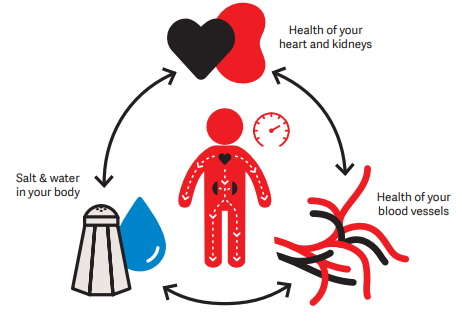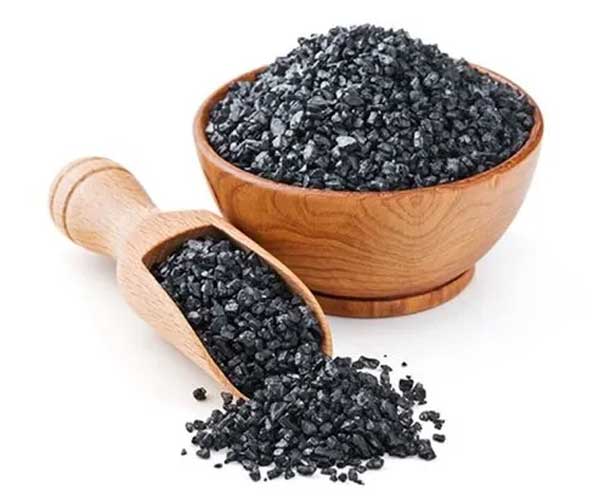Salt Intake
THE SALT INTAKE: IT’S RELATION TO HEALTH & DISEASE
The history of the world according to salt is simple: animals wore paths to salt licks; men followed; trails became roads, and settlements grew beside them. As civilization spread, salt became one of the world’s principal trading commodities. Salt routes crisscrossed the globe. Of all the roads that led to Rome, one of the busiest was the Via Salaria, the salt route, over which Roman soldiers marched and merchants drove oxcarts full of the precious crystals up the Tiber from the salt pans at Ostia. Ships bearing salt from Egypt to Greece traversed the Mediterranean and the Aegean. Herodotus describes a caravan route that united the salt oases of the Libyan Desert. Venice’s glittering wealth was attributable not so much to exotic spices as to commonplace salt, which Venetians exchanged in Constantinople for the spices of Asia. In 1295, when he first returned from Cathay, Marco Polo delighted the Doge with tales of the prodigious value of salt coins bearing the seal of the great Khan. As early as the 6th century, in the sub-Sahara, Moorish merchants routinely traded salt ounce for ounce for gold. In Abyssinia, slabs of rock salt, called’ amôlés, became coin of the realm. Each one was about ten inches long and two inches thick. Cakes of salt were also used as money in other areas of central Africa. A soldier’s pay—consisting in part of salt—came to be known as solarium argentum, from which we derive the word salary. A soldier’s salary was cut if he “was not worth his salt,” a phrase that came into being because the Greeks and Romans often bought slaves with salt.
Man’s innate appetite for salt may be related to his evolution from predominantly vegetarian anthropoids, and it is noteworthy that those people who live mainly on protein and milk or who drink salty water do not generally salt their food, whereas those who live mainly on vegetables, rice and cereals use much more salt. Medicinal use tended to emphasize the positive aspects of salt, e.g. prevention of putrefaction, reduction of tissue swelling, treatment of diarrhea. Evidence was also available to ancient peoples of its relationship to fertility, particularly in domestic animals.
Evidence has shown that regularly eating too much salt puts us at increased risk of developing high blood pressure. A high salt diet disrupts the natural sodium balance in the body. This causes the body to retain water, which increases the pressure of the pushing of blood against the vessel walls. High blood pressure is the main cause of strokes and a major cause of heart attacks and heart failures, the most common causes of death and illness in the world. Our body removes excess water from the body by filtering blood through the kidney. This requires a balance of sodium and potassium in the body to pull the water across the wall from the bloodstream into a collecting channel in the kidney. A high salt diet will alter this sodium balance, causing the kidneys to have reduced function and remove less water resulting in higher blood pressure. This puts strain on the kidneys and can lead to kidney disease. In addition, a high salt intake has been shown to increase the amount of protein in the urine which is a major risk factor for a decline in kidney function. There is also increasing evidence that a high salt intake may increase deterioration of kidney disease in people already suffering from kidney problems.

Foods high in salt or sodium include the following:
Fast foods• Canned, processed or packaged foods• Frozen dinners• Ready-to-eat boxed meals• Sauces, salad dressings, marinades and condiments• Cured or salted meats such as hot dogs, bacon, ham, lunch meats and sausage• Salt including kosher salt and sea salt• Beware of products with hidden/added sodium: Look for word “sodium” on• ingredient list, such as monosodium glutamate (MSG) or sodium nitrate
Cutting Down on Salt/Sodium: Recommended Guidelines:
Limit sodium to 2,000 mg total per day. Consider keeping a record of your• sodium intake. Remember that one teaspoon of salt contains 2,300 mg of sodium!• Do not use salt for cooking or add salt to food at table (Take away salt shaker!)• Beware of salt substitutes – they contain potassium and are not safe for kidney• patients to use
Look for foods with labels such as sodium free, salt free, low sodium, no salt added, unsalted or lightly salted. Read food labels for sodium content: Look at column with Percent Daily Value• (%DV). The best food choices are foods with %DV of 5% or less. Avoid foods with DV% of 20% or greater because they contain too much salt. Buy fresh foods when possible and more often• Prepare and cook your own foods from scratch, not prepared foods or boxed• mixes Rinse canned foods (vegetables, beans, meats and fish) with water to remove• extra sodium.
VARIOUS TYPES OF SALT
Table Salt
Also known as “iodized salt,” table salt has very fine grains and contains potassium iodide and an anti-caking agent that helps prevent it from clumping. Because the anti-caking agent can give off a metallic taste


Himalayan Pink Salt
The purest of all salt, Himalayan pink salt is harvested from the Khewra Salt Mine in the Himalayan Mountains of Pakistan. Easily recognizable because of its pink color, this salt contains all 84 natural minerals found in the human body.
Black Salt
Also known as Kala Namak (which means “black salt” in Nepalese), this reddish-brown salt is created by cooking rock salt with charcoal, herbs, seeds, and bark in a furnace for 24 hours. It has a very distinctive flavor and smell—often described as soft-boiled egg-like.


Sea Salt
This comes straight from evaporated sea water. Depending on the area the water is coming from, its particular mineral content and the method used to evaporate, sea salts can vary quite a bit. The salt you see here is called Maldon, harvested off the coast of Great Britain. These large, delicate flakes are made by boiling seawater to first remove impurities, then continuing to heat it until the salt crystallizes. The salt is then “drawn” by an expert salt maker to keep the large, flaky crystals intact, a notable quality that makes this particular variety a great finishing salt (though most sea salts are very versatile and can be used as both a dish finisher and a dish builder). A common variation on sea salt is to smoke it, which I can envision originally happening by accident on some beach where salt was drying near fish that were being smoked.

Prof (Dr) D Mukherjee is an alumnus of the prestigious Armed Forces Medical College, Pune where he did his MBBS & MD (Medicine). Subsequently he went on to do his DM (Nephrology) from PGIMER Chandigarh, which is the foremost training institution for nephrology in India.